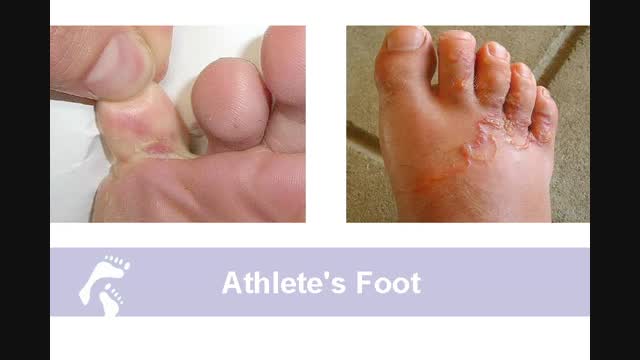
We love it when our feet look healthy and attractive and can carry us through the day without any issues. Unfortunately, it is all too easy for a condition like athlete’s foot to develop and cause problems that slow us down. Knowing how you get it and what to do for it can help you deal with this common foot infection.
Easy Come – From Heel to Toe and Beyond
Athlete’s foot is caused by a fungus that is found all over our environment. It gets its name because the fungi are found in places athletes frequent, like damp pool sides, saunas, and gym showers. It can live anywhere that is moist and warm, though, including your bathroom, damp towels and floors, and your shoes. A person with the infection spreads the fungus wherever their feet touch, and the next person can pick it up.
Once the fungus sets up residence on or in your outer skin layer, it goes to work. It usually starts between the toes, which is naturally the warmest and moistest place on your foot, and can cause the skin to crack and peel. It can easily spread to other toes and beyond, causing red, scaly, peeling patches that itch and burn. If bacteria invades as well, a mixed infection can occur that can be difficult to treat.
With the dry, moccasin-style type of athletes foot, the skin on your sole may feel a little tender. Soon, it will become thick and dry with cracks forming along the surface. The condition may just look like dry skin, but there is more going on. From there, the infection can spread to your toes, causing fungal nails—and a whole new set of problems that need separate treatment.
There is also a wet type of this condition called vesicular, which starts out with fluid-filled blisters on the bottom of your foot or elsewhere. These can break and get infected, leading to a painful, itchy rash. If you touch infected areas and then touch other places on your body without washing your hands first, you can actually spread the infection and develop jock itch or ringworm.
Can I Prevent Athlete’s Foot?
Experts aren’t sure why, but some people can fight off the infection, while others succumb to it over and over. There are habits you can form that will lessen your exposure and provide a less hospitable environment for the fungi to grow.
Start by always wearing foot protection in public areas. Those flip flops or shower shoes may look a little strange in the sauna, but if it means the fungi stay on the ground and not on your feet, it’s worth it. Don’t share towels or shoes with anyone else, either.
Next, keep your feet as clean and dry as possible. Daily washing and drying, changing your socks when they get damp and alternating shoes so each pair can dry thoroughly between wearing, is recommended. Light shoes of natural, breathable materials can promote air flow around your toes, too. Using a good foot powder, like the ones found in our product catalog, can also help keep your feet dry in shoes.
Finally, go barefoot, when it’s safe, to let your toes dry out. You can also use antifungal powders and sprays to treat your feet—and your shoes—so the fungus doesn’t have a chance to grab a foothold—literally.
How to Get Athlete’s Foot to Go Away
There are several effective, over-the-counter creams, sprays, and powders that can treat mild cases of this itchy rash. Follow the directions carefully and keep doing it for a week or so after symptoms disappear. This will make sure the infection is truly gone. If it doesn’t get better, or gets worse, come in to Country Foot Care and have our expert podiatrists take a look. We can prescribe stronger medications that can be more effective. Appointments can be made at any of our offices by calling them directly or using the online form found when you click on the MAKE AN APPOINTMENT button at the top of this page.
